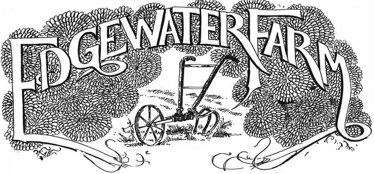There is a high cost for doing the right thing. It does not mean that “no good deed goes unpunished”, but in farming a lot of what we do around here is spend additional money while taking the long view of the future of our farm…and for some of us that means looking beyond the grave.
Not all of it is that long term. I am particularly interested in soil biodynamics. I will be the first to admit, I am no scientist (or accountant, mechanic, or meteorologist, for that matter) but I have been always interested in soil chemistry and soil biology. As a result of that, I have believed that good cover cropping was essential to soil health and long term soil productivity. In the short term, extensive commitment to crop rotations and use of green manures is a direct expense, perhaps an unnecessary expense against the bottom line. I could purchase fertilizer like the commodity crowers in the Midwest and still harvest a crop, right? But we feel that what we do here -essentially row crop ag- is essentially a disturbance in the natural ecological flow of things and not all that great for the soil’s physical and nutritive values. Cover crops are a way of amending that disturbance…and those practices that reduce impact are inherently good to do, and although they do not enhance the bottom line, they hopefully will have some pay back in the future.
Ray in a field of mustard... prettiest of the cover crops.
There are the high costs of business that have no real payback, just are large expenses. I refer, of course, to the nemesis of all small farms like our; and that is the newly mandated FDA Food Safety Modernization Act that goes into effect today. Essentially it is a duplication of the USDA’s Good Agricultural Practices (GAP) program that was set up as a tool to be used by large wholesale growers and vendors. So now some farms have two agencys to answer to, two sets of documentation and two sets of fees to pay the federal government. Say nothing of the additional bureaucracy that will be paid by tax dollars. This kind of investment in the future is not helpful, but it is mandatory. And expensive.
There are farm investments that may or may not contribute to the viability of the farm. Whereas seed, machinery and soil ammendments are a necessary components to the economic health of the farm, is the new paint of the farm barns a good investment? Looks nice, shows we care, but how do you give justify its shaky value other than it “protects the outer shell”? Is that money really well spent…aesthetics? How about the solar array? We finally installed a 29KW array on the barn roofs this past year. There was a pile of money shelled out for that baby, and even with some grant money from the NH PUC (public utilities commission) and the USDA, it was still $60,000 out of pocket and small financial payback over the period of 20 years.
this big investment...
When I wrote the check I felt really good about reducing our farms carbon imprint on the planet, but I could have installed a generator that would automatically come on in a power outage and insure the safety of 30,000 square feet of greenhouse produced plants for half the money. That may have been the smarter business decision. Chalk it up to the high costs of trying to do the right thing…


